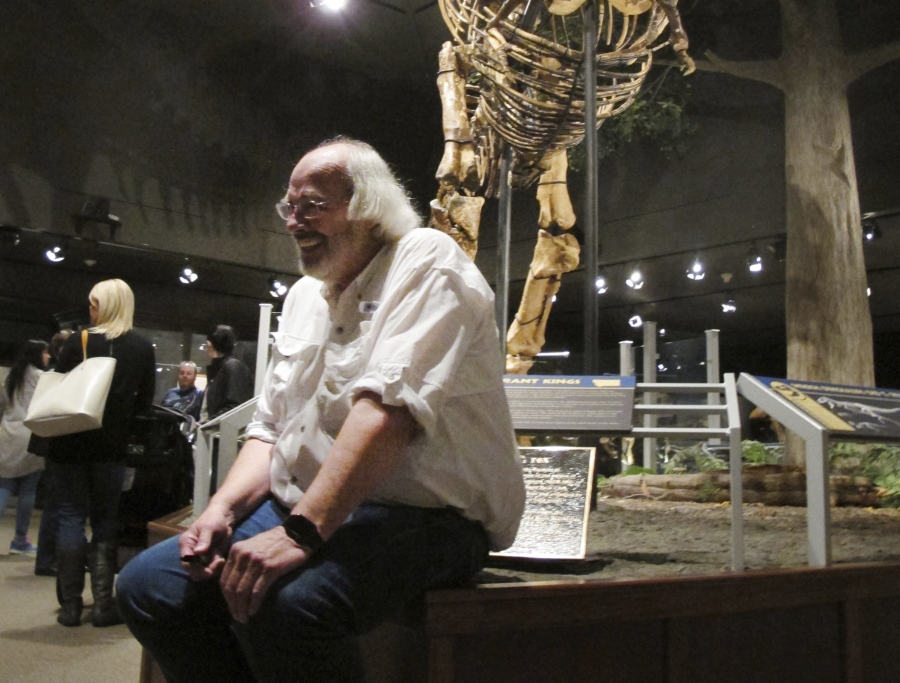HELENA, Mont. — Forget the gray, green and brown dinosaurs in the “Jurassic Park” movies. Paleontologist Jack Horner wants to transport people back in time to see a feathered Tyrannosaurus rex colored bright red and a blue triceratops with red fringe similar to a rooster’s comb.
Horner, who consulted with director Steven Spielberg on the “Jurassic Park” films, is developing a three-dimensional hologram exhibit that will showcase the latest theories on what dinosaurs looked like. He is working with entertainment company Base Hologram to create an exhibit that will let people feel as though they’re on an archaeological dig, inside a laboratory and surrounded by dinosaurs in the wild.
“I’m always trying to figure out a good way to get the science of paleontology across to the general public,” Horner recently told The Associated Press. “Like taking them into the field or taking them into my laboratory and then using the technology that we have to show people what dinosaurs were really like.”
That understanding of what dinosaurs looked like has changed a lot since 1993’s “Jurassic Park.” Researchers now believe dinosaurs were much more bird-like than lizard-like, and scientists studying dinosaur skulls have found keratin, a substance that gives birds their bright colors.
“We can see at least areas that could be vividly colored, very much like birds, and there’s no reason to make them different from birds,” Horner said.



